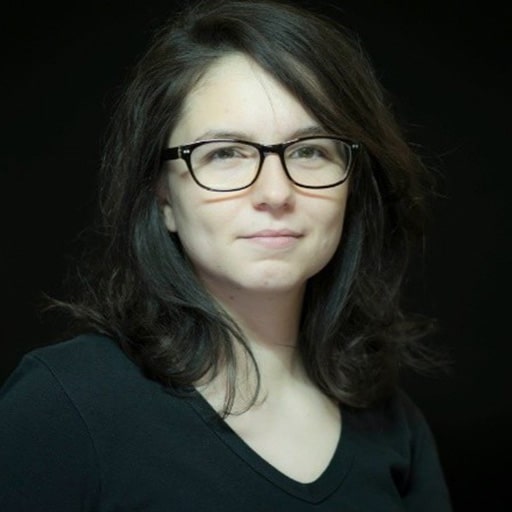
He was the youngest photographer to make it into MoMA’s permanent collections when Edward Steichen acquired one of his photographs in 1950. He was also the youngest member of the Photo League, a New York collective whose social commitment led to its dissolution during the Cold War. In France, Harold Feinstein’s (1931–2015) name had long remained unknown. Impressed by the work of the American photographer whom he discovered in the 2010s, Thierry Bigaignon, founder of the eponymous gallery, decided to put him back in the limelight. In 2017, he featured Feinstein’s first solo exhibition in Europe. A second one followed a year later. « Life as it was », the final installment of a trilogy envisioned by the gallery owner, opened in late January and is Harold Feinstein’s first exhibition at the gallery’s new location.
While the two previous exhibitions were organized chronologically, this last segment is a recapitulation. Displayed on the immaculate white walls beneath a large glass skylight, the photographs survey four decades of Feinstein’s career, from the late 1940s to the 1980s. “The exhibition shows the overarching consistency of his worldview,” notes Thierry Bigaignon. Most of the images on display were taken at Coney Island, in Brooklyn. This small peninsula, the photographer’s native soil, offered New Yorkers leisure, sunshine, and water. “It was Harold Feinstein’s favorite playground, a place of enjoyment, exuberance, and a real mix of people. Everyone was there, regardless of social background or skin color. There was a kind of abundance that spoke to him.”
Here we see an easy-going fellow handling a corn cob; a pair of children walking hand in hand; and a couple of barefoot women leaning over a railing. Everyone exudes joy and simple happiness. Above all, we feel the photographer’s kindness toward these anonymous people as he captures snippets of their daily life.


This impression is confirmed by Andy Dunn’s documentary Last Stop Coney Island: The Life and Photography of Harold Feinstein, screened at the gallery bookstore. It includes archival footage of the photographer lecturing in the early 1980s. At a time when photography wasn’t taught at universities as it is today, Harold Feinstein launched his own course, which became one of the most popular classes on the East Coast of the United States. With a full head of silver hair and a beard to match, he exhorts his students.
What is most striking is the warmth he emanates and his positive attitude. One can’t help but think that the photographer resembles his images. “In his course, he spoke about technique, but for the most part his classes were more about philosophy of life,” explains Thierry Bigaignon. “He believed you had to like people, because you could take a photo only if you opened up to others. I had some of his former students visit the gallery, and they told me about their teacher who had had a great impact on their lives. He was almost like a guru who explained life and how to live it. That willingness to share what he knew says a lot about his personality and generosity.”
Looking at Harold Feinstein’s photographs, the term “humanist photography” comes to mind. His talent won him recognition from the greatest artists. W. Eugene Smith, whom Feinstein joined for a time at the Jazz Loft and with whom he collaborated, said: “[Feinstein] is one of the very few photographers I have known, or have been influenced by, with the ability to reveal the familiar to me in a beautifully new and honest way.”

The sunny quality of Harold Feinstein’s person and images does not preclude a certain melancholy. “The exhibition closes with a single color photo,” notes Thierry Bigaignon. “This image reminds me a lot of Hopper and presents a kind of a contradiction. Normally, black and white is perceived as nostalgic. But here, it is color that conveys sadness. The image says something about the modern world to come. A world of solitude.”
If the exhibition leaves you hungry for more, visit the open-shelf storeroom. Alongside the curated bookstore (where an artworld celebrity features a selection of 25 books most important to them), the storeroom is one of the new features inaugurated when the gallery moved into its new locale last September. There are no hidden closets, no dusty crates, but a vast space where people can come and go. If you’re curious, you may ask one of the black-clad employees to let you look at the frames sitting quietly on the shelves. This unique space is part and parcel of the gallery’s constant transformation. Bigaignon seeks to offer a unique experience to his visitors, driven by the olfactory identity developed for the place by an Italian perfume-maker. Photography still takes center stage, but it is often driven into a corner, oriented toward contemporary art—without ever renouncing classical masters like Harold Feinstein.
By Laure Etienne
Laure Etienne is a Paris-based journalist and former member of the editorial team at Polka and ARTE.
Harold Feinstein, « Life as it was », until March 26, 2021, Galerie Bigaignon, 18, rue du Bourg-Tibourg, Paris 75006.





